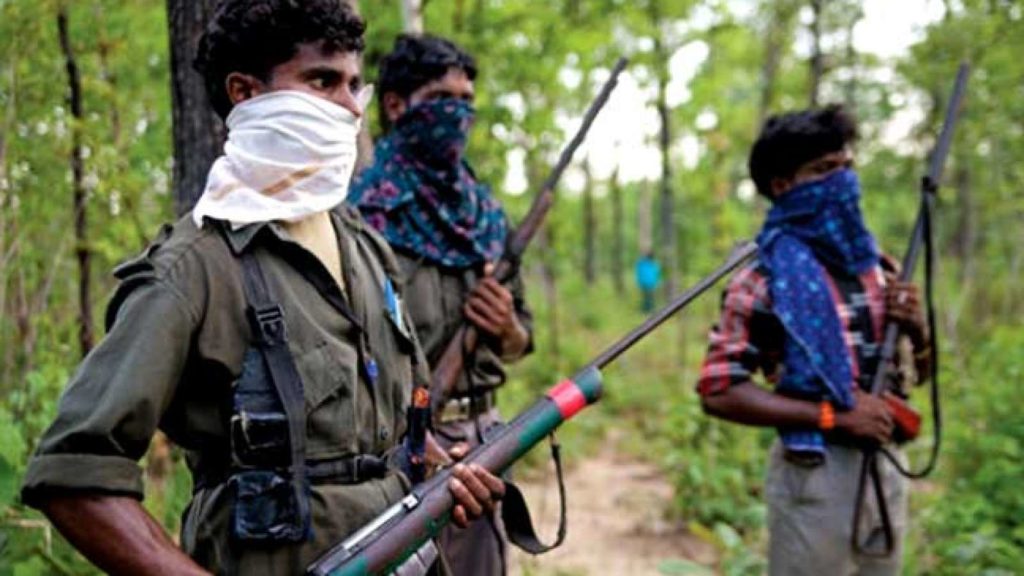Persistent conflicts on the Red Corridors reveal India’s tribal crisis
India has labelled the Maoists as rebels long back and the Naxalites have remained prompt in their answers; the recent one was reported in a tribal (adivasi) heartland, where 25 paramilitary soldiers were killed in Sukma, a remote district in Chhattisgarh.
India’s first world charm seems to take a back seat every time an issue of the minorities or martyrs come to the forefront. The recent incident in Chhattisgarh sparked debates of nationalism, demands of the marginalised tribal communities, their age-old oppression, the step-motherly treatment of the government and most significantly the rise and fall of the radical leftist, armed forces who are now infamously termed Maoists or Naxals.
Guerrilla warfare
The Bastar tribal area of the central Indian state, Chhattisgarh, has turned out to be the most dreadful boulevard for the Indian state armed forces. The area has remained a space of ongoing conflict between the armed Maoist rebels and the Indian government for long. It was an early morning shifting drill on April 24, when a contingent of the Central Reserve Police Force (CRPF) deployed to secure a 5.5 kilometre road under construction between Chintagupha and Burkapal in Sukma district, were attacked. The unprecedented attack on the CRPF contingent left the troop weary and by the time the cross firing ceased, 25 police personnel were killed and eight were seriously injured.
The Maoist belts have always shown resentment and have targeted the road construction in areas that come in the proximity to their base. While the logic and the theory of the government defeats the Maoists, the dwellers of the villages in these naxal belts are allegedly in support of these bush-attacks. The government has pushed for the connectivity even after succumbing to casualties all these years; however, the tribal community has maintained their doubt on the government’s stance regarding connectivity.
Three days post the action, the Maoists have taken the responsibility for the attack and said that it was in retaliation to the oppression against the wronged people in Odisha and South Bastar. The audio release is recognised as the voice of Dandakaranya Special Zonal Committee of CPI (Maoist) spokesperson, Vikalpa. The six-minute audio press release mentions the action as ‘necessary violence’ to stand up for the ‘exploited people’. A similar attack in Sukma, where 13 CRPF personnel died, was also hailed in the audio speech. The voice congratulated the leader, commander and the cadres who undertook the attack in Bhejji. “We are not violent, but this attack is a continuation of the attack in Bhejji on March 11. They are carried out in self-defence to protect the revolutionary struggle and bring a Janatana Sarkar,” the audio release said.
Government nods to counterinsurgency
The security forces in India have now been instructed to review a counterinsurgency strategy in the core Maoist areas. In a high-level meeting attended by the Chhattisgarh Chief Minister, Raman Singh, Internal Security adviser to the Union Home Ministry, K Vinay Kumar, the state home secretary, BV Subramanyam and other senior officers of the state police and the paramilitary forces, a revised strategy was given a go-ahead.
The state government asked for reinforcement of two battalions from the centre and has shifted its focus to the core areas including the 1000 sq km area between Dornapal-Jagargunda in the Sukma district.
A demand to deploy 12,000 additional specialised security personnel such as CoBRA, the anti-Naxal wing of CRPF and the Naga Battalion that are trained to tackle guerrilla warfare is placed to the union government. Local tribal youth and the Naxals who have surrendered are also considered as the additional two battalions to be deployed.
Naxals, Maoists or rebels?
A soldier to an establishment can be a perpetrator to the other. The rebels consider themselves as soldiers. Influenced and inspired by an agrarian society, based on Marxism-Leninism-Maoism, the objective of the Communist Party of India (Maoist), commonly known as the ‘Naxals‘ or ‘Naxalites‘, hangs around the rights of the marginalised adivasis. The armed wing is said to have a dominant idea of fighting a protracted people’s war (PPW) to seize political power and start a New Democratic Revolution (NDR).
The idealist notion of having a classless society can find its roots in the Naxalbari uprising of the 1960s – an anecdote that remains beyond the scope of this report. However, the government over the years have struggled to contain the jungle uprising in the eastern region and neutralising the ‘Red Corridor’ still remains a challenge.
While the country is projected as the emerging economic superpower of the world and inflated funds get pumped into the glitz and glamour of Bollywood and cricket, the tribal population in our country remains dejected and begging for basics. Drinking water, healthcare, education and a sustainable government aid including roads, infrastructure and equal rights have always received a second class treatment. Whether it is the Congress-led UPA government or the present NDA regime, the tribal folks have seemingly found liberation and resolution under the Maoists. The radical, armed force inspired by the communist idealism have been setting up their bases in areas such as the forested mountains of southern, central and the eastern parts of the country. The census reported that India is home to 84 million indigenous tribal people who survive exclusively on farming and the lion’s share of them live below the poverty line, devoid of basic amenities.
As we approach 70 years of independence, the idea of effective governance in India has turned into a utopian demand. Remote areas having socioeconomic problems, such as agitation in the mining belts, duping land acquisition and discrimination based on caste and creed, became a primary reason that led to the Naxalites opting for armed revolution. Over the years, the Maoists have made their presence felt in these areas and have voiced the cause of the tribal community. States such as Jharkhand, Odisha, Chhattisgarh, West Bengal, Bihar and some parts of Tamil Nadu remain the base of operation for the Naxals. International portals such as Al Jazeera have reported about the community-driven projects undertaken by the Naxals in various tribal areas. In areas, where the government has failed to reach out, such as remote villages in Jharkhand, the Maoists have seemingly provided support to the farmers of the villages to improve farming methods.
The art of politics
Incidentally, Bharatiya Janata Party chief Amit Shah was in West Bengal on the very day when the ambush attack in Chhattisgarh took place. He was smart to pick the Naxalbari as the spot to kickstart their 15-day tour that aims to connect with the booth-level workers of his party. He even had lunch with a nearby tribal family at South Katiajote village in Naxalbari.
Like one would assume the agenda of the BJP chief was definitely strengthening his roots in Bengal, Shah went on to criticise the Mamata Banerjee-led TMC government for failing to address the tribal issues. However, a state like Chhattisgarh ruled by BJP since December 2003 is yet to address the tribal issue and incidents such as Sukma speaks volumes about contradictory promises and vested political interests.
Life of the locals
Somewhere in between the two forces dwell the innocent adivasis of the forests. They are perpetually in two minds and continue to live by the edge of it when it boils down to their survival strategy.
The President of People’s Union for Civil Liberties (PUCL), Dr Lakhan Singh issued a statement expressing deep concern over the ruthless ambush carried out at Sukma and pleaded for civil administration instead of security administration. In a press statement, Singh says, “This incident shows that the large numbers of surrenders and arrests (many of them challenged by villagers) boasted by the Chhattisgarh police in the past few years have not led to a significant decline in the military capacity of the Naxalites. A situation of civil war still prevails in Bastar although the Government of India refuses to declare this an “internal armed conflict” to avoid monitoring by the United Nations. The PUCL apprehends that soon the security forces would ‘retaliate’ by ‘search and Cordon operations’ in the area which is only likely to hurt the soft target of ordinary civilians. Consequent arrests, beatings and killings will only intensify the cycles of violence and counter-violence.”
The police forces suspect the villagers of supporting the Maoists, while the rebels keep an eye on every family to avoid having spies amongst them. To cite an excerpt from a personal account of a traveller in one of the villages near Sukma, there is not much hope for humanity.
The person, choosing to stay anonymous, writes, “During my stay in a village called Panta, around 2.5 kilometres from Bhejji, I saw women gathering near the police station in demand of release of their men. The youngest of the lot was dragged inside the station. Words in some language different from Hindi were exchanged; but, their grin looked vulgar. She was released with the other villagers at nine in the evening.”
The locals fear the forces and occasionally run out of fear. They are arrested and beaten up even if they don’t run, more if they are caught fleeing. If they divulge any handy information about the rebels, the family ends up in trouble. The circle of everlasting fear and darkness lingers with very little help in real terms from the government.
The National Human Rights Commission (NHRC) also expressed their grief and also urged the government of the state to take a note of the sacrifices made by the CRPF personnel. In a press statement, the NHRC spokesperson says, “The Commission stands for upholding human rights of all in the country and is consistent in its firm belief that the acts of violence are an anti-thesis to the struggle for the protection of human rights.” Questioning the accountability of citizens and politicians along with the security forces, NHRC observed, “A loss of life of any innocent person, whether in force or a civilian, is a matter of violation of human rights.”
While the ongoing conflict between the establishment and the rebels have now witnessed tens of thousands of deaths and money being spent superfluously, only a hopeful critic might see an end to the revolt by better governance and not with avenging missions. A bloody past leads to a bloody future and no wonder the red corridor of India will see more bloodshed in the near future.










